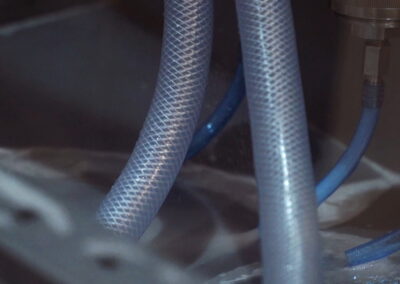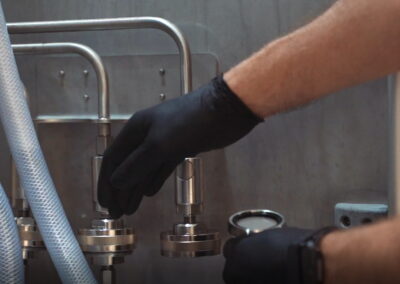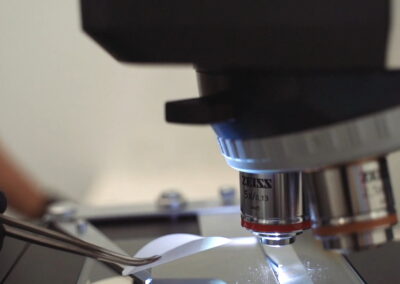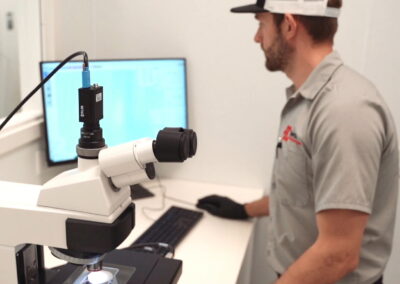Micron Analysis Testing
Over 100 Years of Racing Innovation
the third and final phase of our racing services allows us to eliminate the threat of contamination-related component failure.
Micron Analysis Testing
The real secret sauce of our racing services package. Micron Analysis Testing is the final phase, and the piece that brings it all together when used in combination with our expertise, high-pressure testing and flow testing.
How does Micron Analysis Testing help?
As part of a wider service cleanse process, photo analysis is carried out to assess and reduce levels of particulate contamination. Ensuring your cooling system is truly clean dramatically reduces engine wear rates, oil starvation & contaminant-related component failure. This also greatly extends the life of a cooler as our service is specifically designed to work without compromising the fatigue levels of the component.
Features
- Dramatically reduces engine wear rate
- Protects the engine and maintains performance
- Extends the life of the cooler
- Maintains 100% cooling performance
- Removes machining swarf/debris and other high-level contamination
- No threat to fatigue levels
- Counts as little as 1 Micron
- Imaging techniques to identify the contaminant material
Is There a Standard of Cleanliness?
The protective effects of cleanliness in a cooling system is why 90% of the teams on the F1 grid subscribe to our service. It’s designed to exceed standards outlined by ISO 16232:2018. And protection of the coolers during cleansing is equally important. By using the latest techniques in fluid dynamics, our flushing techniques, carried out by our own Serck Motorsport designed fluid dynamic service flow rigs, use high level agitation, air injection pre-cleaning concepts, and micron analysis testing to identify particulate levels to 1 micron, without using harmful ultra sonic or pulse techniques that can cause fatigue.
How Do You Capture The Data?
You can’t manage what you can’t measure. The data assessment of before and after cleanliness levels is a key component of our service. Our process includes a series of pre-clean extractions with various fluids and techniques as well as observing live optical particle counting before conducting the final extraction sample for microscopic particle analysis. Our advanced clinical microscopes from Leica coupled with automated X,Y, Z traverse and automated particle analysis software allow a particle size determination from 1 micron upwards. The particle analysis software can determine the individual sizes and number of particles in a given size range, and characterise the particles as metallic, non-metallic or fibre.
How Can I See This Data?
Our reports include particle analysis expressed per sample area, volume and/or component and is presented in tabular and graphical formats for both count and size. Photographic images are also captured and presented on the cleanliness report using a high resolution colour camera and a top light for a 3 dimensional overview.
A typical Component Cleanliness Code (CCC) is reported in the format of: V(B12/C12/D12/E11/F9/G7/H6/I4/J3/K2) and with a Global Code of 14, where V represents assessment by Volume, the letters represent particle range sizes and the numbers represent the contamination level particle count.
Our cleanliness laboratory not only carries out specific component cleanliness assessments and provides high performance component cleaning, it is also backed up with a particle cleanliness analysis reports for each core type tested.
Parameters
- In-depth reporting documentation
- Online liquid particle analysis of flushing media
- Gravimetric particle assessment
- Microscopic particle analysis
- High-resolution photographic imaging
- Automated process control
- Water radiators
- Oil coolers
- Intercoolers
- Charge air coolers
- Fuel system components
- Water pumps
- Hydraulic coolers
- Squirt jet coolers
- Fuel coolers
- Oil lines
- Fuel lines
- Hydraulic lines
- Minimum 1 micron identification




